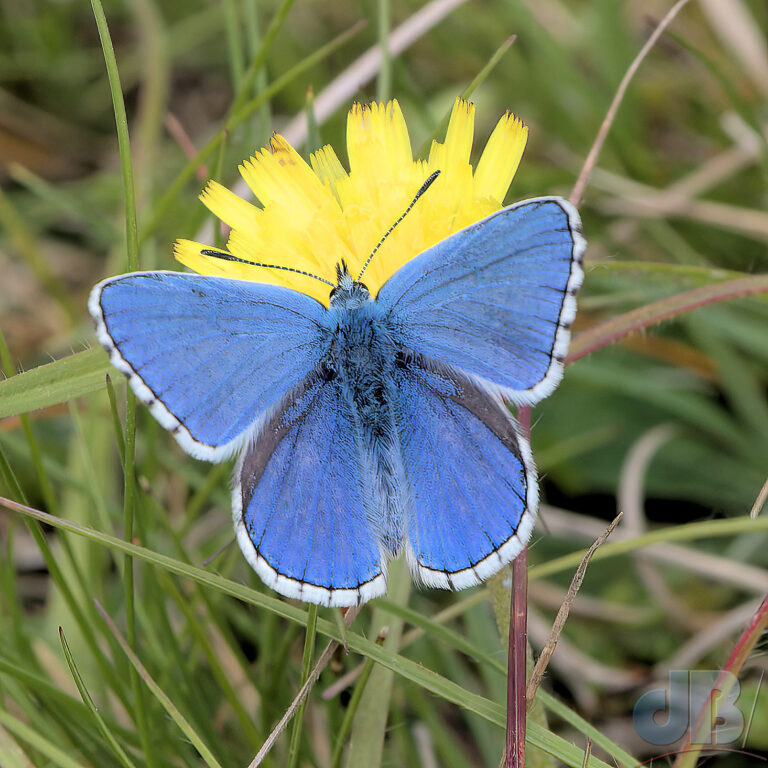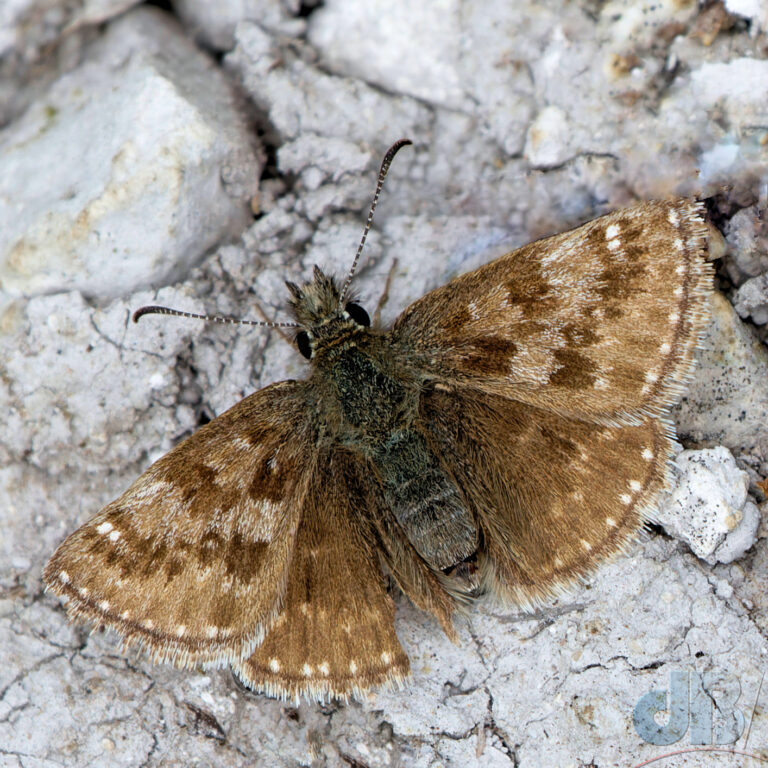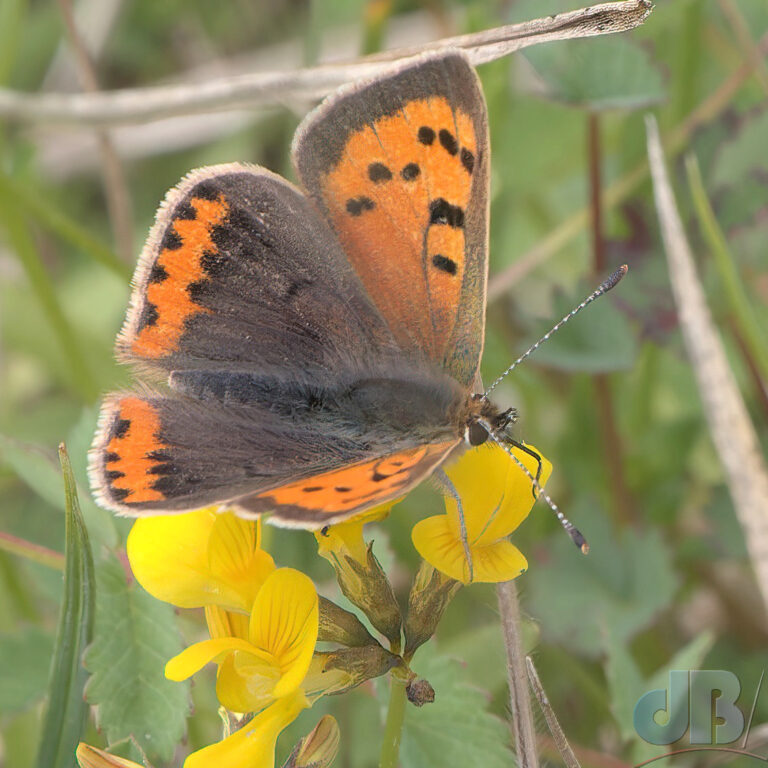TL:DR – I ticked a new-to-me butterfly, Dingy Skipper, at Devil’s Dyke near Newmarket this month.
The weather picked up mid-morning here in South Cambridgeshire, so I pinged my photo buddy Andy to see if he fancied taxiing me to Devil’s Dyke to seek out the cluster of Dingy Skipper butterflies not by others at this chalky embankment adjacent to Newmarket Racecourse. He did and within seconds of stepping on to the Dyke, we’d seen our first Adonis Blue (a presumed introduction dating to some time during the first lockdown). There were several Brimstone and a few Whites within the first few steps too.

We had to walk a bit further to pick up more Adonis Blue of which we probably saw several dozen over the course of 2-3 hours. Also Common Heath and Yellow Shell moth and one or two micros. Numerous Brown Argus and Small Copper butterflies along the banks. There is no Field Scabious in bloom yet and no sign of Marbled White nor the more common here, Chalk Hill Blue butterflies.

But, we had success with the Dingy Skipper, Erynnis tages, which is new to my butterfly list, the first “NFM” for me in 2023.


Now, you might be wondering where we draw the line between moths and butterflies, the Dingy Skipper certainly has a moth-like appearance, especially when compared with something like the Adonis Blue. Indeed it looks rather similar to the Common Heath moth. But, there is no line between butterflies and moths. Butterflies, as I’ve said here many times before, are simply one branch on the moths’ family tree, with equal footing to other Lepidoptera groupings such as the Pyralids, Erebids, Geometrids (inchworms), or the Noctuids (owlets). Butterflies are moths. Asking what’s the difference between a butterfly and a moth is like asking what is the difference between a ladybird (ladybug) and a beetle…
